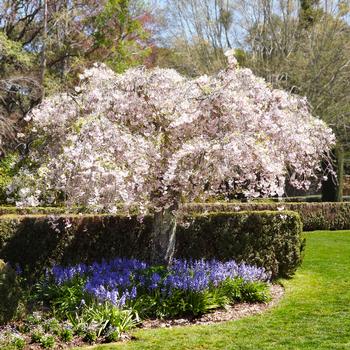Landscape Trees
Trees add beauty to the landscape with their form, foliage and flowers. In addition to visually enhancing our environment, trees are vital to supporting life on earth. They absorb and store carbon dioxide, release oxygen, provide cooling shade, enhance pollinator and wildlife habitat, and filter pollutants from air and water.
Tree Selection
When considering a tree for your garden, careful analysis is needed. The first step is to determine the function of a tree. Is it for shade, windbreak, privacy, wildlife habitat or aesthetics? Then choose the appropriate location in the landscape. The site should have enough space for the tree at maturity, to accommodate its root system and canopy (above-ground branches and leaves). Keep in mind that the roots can extend beyond the canopy. Trees too large for the site can lead to future increased maintenance costs and possibly ruin the desired function.
In addition, select a tree species with genetic resistance to local common pest problems and disease. Ask about pest resistance at local cooperative extension offices, at retail nurseries or from a certified arborist.
Ornamental Tree Planting
After selecting a tree for your garden, proper preparation and planting will help the tree develop a strong and healthy root system for optimal growth. The planting process includes exposing the roots to correct any root problems as well as to determine the hole size; digging the hole; planting the tree; staking, if needed; and applying mulch. For detailed information, see these resources:
- Step-by-step process for planting a tree:

Tree Care During a Drought
With periods of drought becoming more common, it’s important to use methods to help trees survive. Lack of water stresses trees and makes them susceptible to disease and pests, which can cause tree death. Because trees take years to grow, they aren't as easily replaced as other plants.
